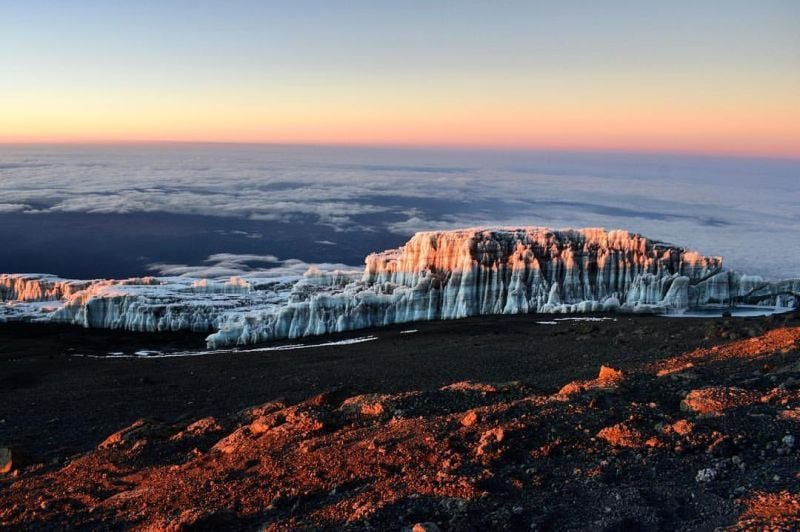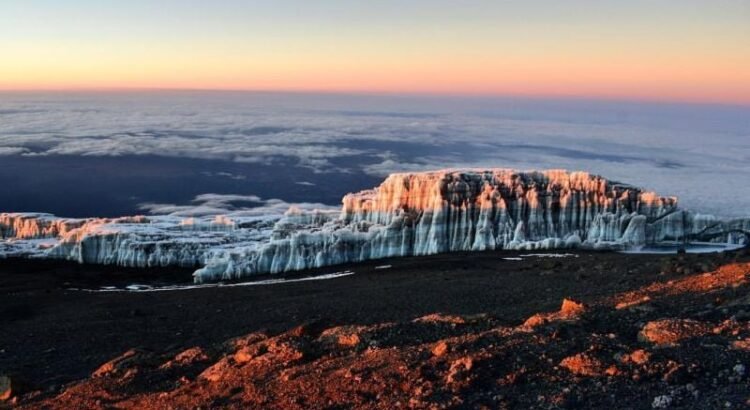
In the heart of Tanzania, rising like a sentinel of dreams, stands Mount Kilimanjaro — Africa’s tallest mountain and the world’s highest free-standing volcanic peak. Towering at 5,895 meters (19,341 feet) above sea level, it is more than just a geographical wonder. For many, it is a spiritual summit, a personal Everest, and a metaphorical rebirth. Climbing Kilimanjaro is not just about the physical triumph of reaching the roof of Africa; it is a soulful experience — a journey that strips you of distractions, reconnects you with your inner self, and reveals a new perspective on life.
The Journey Begins With Intention
Every great journey starts with a decision, and climbing Kilimanjaro is no exception. Most people who take on this challenge are not professional climbers. They are teachers, doctors, artists, adventurers, retirees — people from all walks of life. Some seek the mountain for a milestone birthday, others for charity, healing, or spiritual awakening. Whatever the motivation, it all begins with intention.
The moment you decide to climb Kilimanjaro, a quiet transformation begins. You start preparing physically — with hikes, gym sessions, and conditioning — but what you’re really preparing for is the mental and emotional odyssey ahead. The mountain calls you, and in answering, you’ve already taken the first step toward discovering a new version of yourself.
Into The Wild: From Rainforest To Ice Cap
Mount Kilimanjaro is unique in its diversity. Few mountains on Earth allow climbers to traverse five distinct ecological zones in a matter of days. From lush rainforests teeming with exotic birds and colobus monkeys to alpine deserts and glacial peaks, the journey is a continuous unfolding of nature’s marvels.
You begin your ascent through a vibrant rainforest. The air is heavy with moisture, and the foliage glistens with life. It feels almost surreal — like stepping into a lost world. The sound of your boots crunching against the damp trail, the distant calls of birds, and the rustle of leaves create a rhythmic meditation.
As you gain elevation, the forest gives way to moorlands and rocky alpine terrain. The air grows thinner, the temperature drops, and the landscape begins to reflect the internal silence taking root in your mind. Disconnected from technology, time, and obligations, you find yourself fully present — attuned to each breath, each heartbeat, each step.
The Challenge Of The Climb
Kilimanjaro is a non-technical climb, meaning you don’t need ropes or mountaineering experience. However, the challenge lies in the altitude. Acclimatization becomes key. “Pole pole,” your guides remind you — Swahili for “slowly, slowly.” And so, you learn to surrender your pace, to move with patience, and to listen to your body.
Every day is a test of endurance and mental strength. There are moments of doubt, of struggle, and of pain. You may battle headaches, fatigue, and freezing temperatures. But this is where transformation takes place. Stripped of ego, ambition, and comfort, you confront your limits — and surpass them. The mountain becomes a mirror, reflecting not just who you are, but who you can become.
Your fellow climbers, often strangers at the start, become a tribe — bonded by shared struggle and quiet encouragement. Laughter around evening meals, stories exchanged in tents, and silent nods during tough ascents create a sense of unity and kinship rarely found in modern life.
Summit Night: The Breaking Point And The Breakthrough
Then comes summit night — the final and most demanding push to the top. You wake around midnight. The temperature is well below freezing. Stars fill the sky in breathtaking clarity. Headlamps light the path ahead like a trail of fireflies moving up the dark slope.
This is the moment where resolve is tested. The climb is steep, slow, and often painful. But step by step, breath by breath, you continue. Around dawn, you reach Stella Point, the edge of the crater. The horizon begins to glow. And then, as the first rays of the sun spill across the African plains below, you arrive at Uhuru Peak — the highest point on the continent.
Tears flow freely. The cold, the exhaustion, the months of preparation — it all culminates in this moment. You’re standing on the top of Africa, but more importantly, you’re standing on top of yourself. You’ve done something extraordinary. You’ve reached a summit that exists not only in geography but in your soul.
A New Perspective
Reaching the summit of Kilimanjaro doesn’t just change your altitude; it changes your attitude. The journey humbles you, yet makes you more confident. It breaks you, then rebuilds you stronger. It forces you to confront fears, insecurities, and mental limitations — and it proves they can be overcome.
As you descend, the world feels different. The same paths seem easier now, the same views more vivid. You carry with you a newfound respect for your body, your willpower, and the natural world. You’ve learned that greatness isn’t measured in trophies or status, but in perseverance and purpose.
Many climbers report that Kilimanjaro changed their lives. They return home with clearer priorities, deeper gratitude, and a rekindled passion for life. Relationships improve. Careers are realigned. Goals are reimagined. The summit marks not just the end of a climb, but the beginning of a more intentional life.
Embracing The Tanzanian Spirit
Beyond the mountain itself, climbing Kilimanjaro immerses you in the spirit of Tanzania. From the warm hospitality of the local people to the rhythm of Swahili phrases and the taste of simple, nourishing meals — every moment is infused with cultural connection.
Your guides and porters — often the unsung heroes of the journey — embody resilience and joy. They carry heavy loads, sing songs along the trail, and greet you with smiles even at the most grueling elevations. Their presence is a reminder that strength is not only physical but also emotional and communal.
Tanzanian values of unity, kindness, and harmony leave a lasting imprint. It’s not just about reaching the top; it’s about how you get there — with humility, gratitude, and support.
A Dawn Of A New You
There’s a reason the phrase “Reach the Top of Africa and Feel the Dawn of a New You” resonates so deeply. Kilimanjaro is a metaphor for life itself. The climb teaches that progress happens step by step. That success requires patience. That the most meaningful victories are often internal.
When the dawn breaks at the summit, it is not just the sky that lights up — it is your entire being. You realize that you are capable of more than you ever imagined. That fear can be conquered. That transformation is possible, even in the harshest conditions.
You return from Kilimanjaro not as a tourist, but as a pilgrim. Not just with photographs, but with wisdom. Not simply with memories, but with a deeper version of yourself.
Planning Your Journey
For those considering the climb, there are several routes to choose from — Machame, Lemosho, Marangu, Rongai, and more — each with its own character, challenges, and beauty. The trek usually takes between 6 to 9 days, depending on the route and acclimatization schedule.
It is essential to go with a reputable guide service. They ensure safety, manage logistics, and enhance the experience with cultural and ecological insights. Most importantly, they are your support system — your lifeline in thin air.
Train well, pack appropriately, and come with an open heart. Physical fitness helps, but mental resilience is the true key.
Final Thoughts
Mount Kilimanjaro is more than just a peak; it is a promise. A promise that we can rise above our limitations. That we can meet ourselves at new heights. That within us lies a summit waiting to be claimed.
In a world often filled with noise, confusion, and doubt, the silent majesty of Kilimanjaro offers clarity. The climb demands effort, but it rewards with perspective. And once you’ve stood at the top of Africa, watched the sun rise over the plains, and felt the cold wind of victory on your face — you are never quite the same.
You are reborn — into strength, into truth, into a dawn of a new you.




